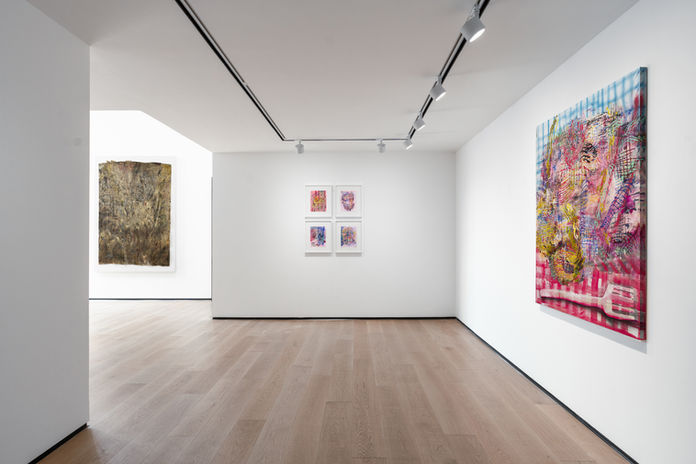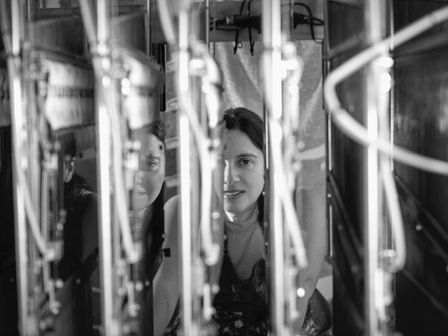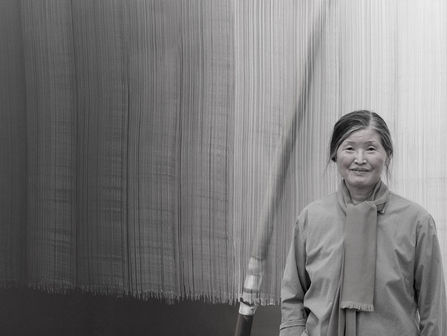Objects imprint memories, time passes with traces. The exhibition “I Grew Into Myself” features five female international artists whose works explore themes of contemplation on artificial intelligence, materiality, childhood memories, diaspora experiences, social class, and the essence of emotionality, offering a rich and multifaceted dialogue across cultures and perspectives. This exhibition constitutes an autobiography of artists situating themselves in the shifting political and social environment, resisting and challenging selective historical narratives which generates and reinforces inequality and injustice. Works comprising a variety of mediums, reconstructed and decontextualised from multiple cultural and historical references, weave together a visual narrative of personal experience, conveying influential and profound contemporary voices across generations. Childhood memories and youthful experiences are central to Maggie Lee’s artistic practice, serving as a counterpoint to adult rules and expectations. In the fantastical worlds she creates — where rebellion meets ethereality, cuteness intertwines with danger, and psychedelia coexists with innocence — she captures the essence of adolescence, a time when the duality of beauty and pain emerges. When the young people begin to discover their passions, beliefs, and values, often with an intensity that is both exhilarating and overwhelming — this quest for self-understanding leads to moments of profound beauty, yet it also brings feelings of isolation and confusion. Lee’s work offers a transformative journey of ones daily life, blending memories, dreams, and narrative imagination. Lee crafts an emotional rollercoaster, staging each phase of her own journey from girlhood to womanhood, embracing the challenges posed by shifting environments and confronting the crisis of maturation. “There are no fixed boundaries in my art, it's more like a fragmented narrative full of cracks and openings that you can enter and leave wherever you wish.” Kaari Upson concentrates on demonstrating the emotional binding between the self and others, between the inner life and surroundings. She worked in a wide array of media including sculpture, video, drawing and painting. By combining concrete objects with imaginary figures, she creates a dystopian world that delves into the collective memory of fear and trauma. The “disturbing” imagery presents viewers with poignant depictions of loss and instability, prompting reflection on themes of turbulence, fragility, and strength. Analia Saban forges new hybrid forms within the realm of artistic mediums, re-examining traditional materials and complicating their definitions. Her practice is deeply intertwined with imagery drawn from everyday domestic objects and architecture. Through a series of complex procedures, Saban deconstructs and de-contextualises these images and materials, raising intricate questions about the purpose of art. She delves into the histories of art, materials, and technology, fostering an interpersonal connection between object-hood and the self. Hyun-Sook Song has cultivated a distinctive style that transcends figurative representation, delving deep into the interplay of material, perception, and contemplation. Her iconic body of work features recurring motifs of silk ribbons, clay pots, and textiles set against serene monochromatic backgrounds. In this tranquil space, the objects remain still, while the movements and rhythms of paint flow and shimmer, allowing memory to whisper and the objects to converse in a dance of colour and form. Song embraces Zen Buddhism and and the power of emptiness, her sparing use of minimal elements encourages a contemplation of the physical and intellectual self in relation to the work, at the same time a yearn of motherland encapsulating childhood memories, the transformation into modernity, and the sense of absence that accompanies it. Wang Xingyun employs a meticulous process, layering thin sheets of paper with pigmented glue onto thick watercolour paper to create textured surfaces that evoke a myriad of emotions and imagery. This technique fosters a tactile experience through visual expression, as she breaks, fuses, hardens, flows, and intertwines the properties of matter on the painting's surface, resembling the tissues of thought. Wang weaves narratives that allude to the aftermath of calamitous events, with subdued tones suggesting both peril and resilience. Drawing from her personal experiences as a queer woman, she identifies parallels between her journey of overcoming fear and helplessness and the fortitude of the materials she employs. Paper — vulnerable, soft, and adaptable — has endured, steadfastly chronicling the grand narratives of humanity throughout history and across borders. Through Wang’s practice, she offers a powerful testament to the enduring nature of memory and transformation. Each piece tells a story of strength, perseverance, and resilience.
Dates:
5 April, 2025 -
30 May 2025
Artists:
MAGGIE LEE
ANALIA SABAN
HYUN-SOOK SONG
KAARI UPSON
WANG XINGYUN
展览现场

































